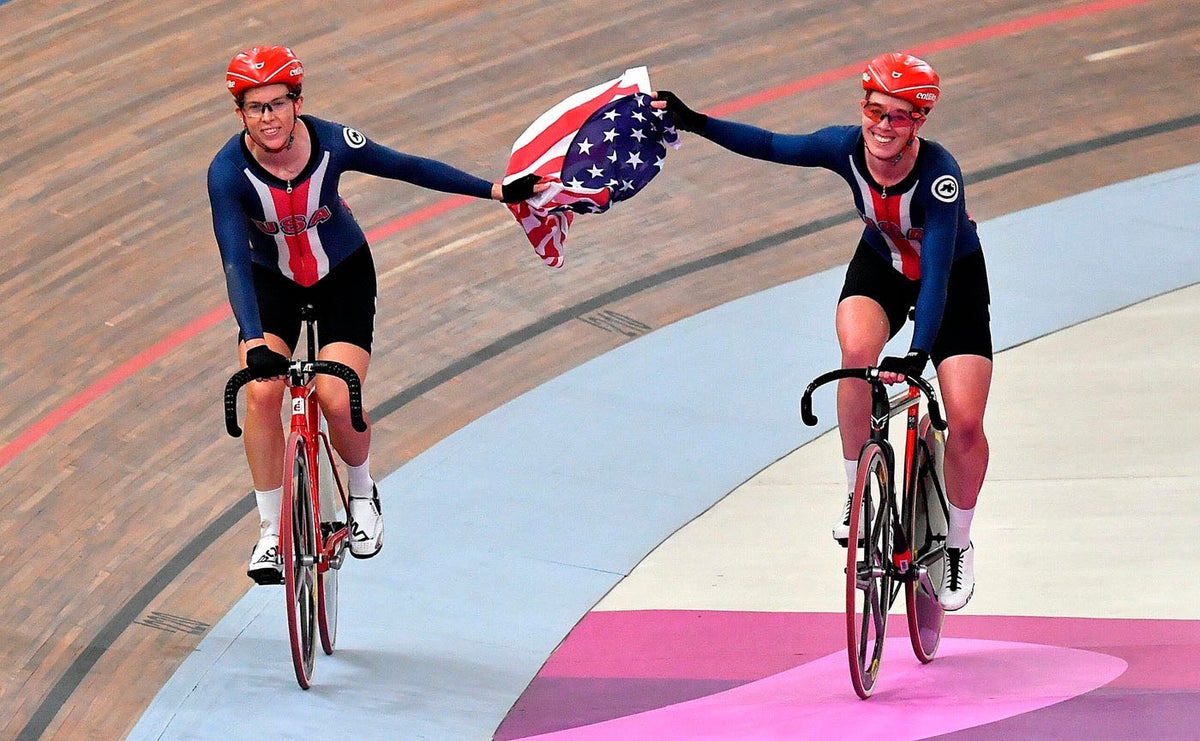No products in the cart.
Outdoor Adventure
What You Missed: Life Lessons from Pro Cycling’s First Astronaut
Welcome to What You Missed, our daily digest of breaking news and topical perspectives from across the outdoor world. You can also get this news delivered to your email inbox six days a week by signing up for the What You Missed newsletter.
Many of us know someone like Christina Birch.
A person with an internal drive and an uncompromising spirit whose push for greatness leads to eye-popping success. The overachiever, the self-starter, the eager beaver.
Birch, 35, is a world-champion track cyclist and a professor who holds a PhD in biological engineering from the Massachusetts Institute of Technology. And on Wednesday, NASA chose her to join the 2021 astronaut class, the agency’s first group of aspiring space travelers since 2017.
She earned this résumé the hard way, and she once spent a year essentially living out of her two-door Honda Civic because her classroom and training facility were separated by 70 miles of California interstate.
“Imagine staying up late preparing a biochemistry lecture for 80 kids hoping desperately that you’re not going to waste their time, and then going out the next morning to do an insane three-hour mixed-interval workout,” Birch told VeloNews in 2019.
Yeah—that’s the kind of person we’re talking about here.
The national news media is bound to tell more stories about Birch and her relentlessness in the wake of NASA’s announcement. More than 12,000 people across the country applied to be an astronaut, and Birch was among ten chosen. Of the group, Birch is the only person to have also made the first cut in an Olympic selection—in 2021 she came within a whisker of representing the U.S. at the Tokyo Games.
Birch is the first U.S. astronaut to come from the world of professional cycling.
”Everything is what you make of it,” Birch told VeloNews on Tuesday morning. “I definitely really liked pushing myself in all of these directions and frontiers, both in research and teaching and also on the bike.”
Sounds easy, right? Look, we realize that success at this level can feel intimidating and out of reach. Still, we believe there are lessons in Christina Birch’s approach to life that we all can apply to our own non-astronaut, non-world-champion selves.
We posed this question to her partner, fellow world-champion cyclist Ashton Lambie. He and Birch recently renovated a bombed-out 1992 Starcraft RV, and during the process he learned a thing or two from his partner.
The RV was in awful shape, with a wasp’s nest in the engine compartment and mold on the carpets and upholstery. One day, while Lambie was trimming wood panels for the truck’s interior, Birch stopped him. The piece he cut fit the hole, but it was an eighth of an inch too big—barely the width of the saw blade. Birch sent it back with a request to get the measurement exact—after all, if there’s something worth doing, it’s worth doing right.
“Find something you’re passionate about, and then do the little things really well every day,” Lambie said about Birch’s approach to life. “If you keep focusing on the little things every day it adds up, and eventually it becomes something awesome.”
Sweat the little things. Do it for the long haul. And never accept a result that’s below perfection.
That’s the Christina Birch method.
New Route on Mount Everest Sidesteps Khumbu Icefall
The journey up Mount Everest could become safer in coming years.
A team of French and Nepali climbers claims to have charted a new route on the 29,028-foot mountain, and the path sidesteps the deadly Khumbu Icefall. Mountaineers Marc Batard and Yorick Vion led the expedition last month and told the French newspaper Le Dauphin that the team fixed 3,200 feet of rope along the new route.
The traditional pathway leaves Everest Base Camp and then enters the Icefall. The new route instead summits a nearby peak, the 19,291-foot Sundare Peak, before linking up with the trail to Everest Camp II. Batard and Vion plan to fix ropes along the remaining 1,300 meters from Sundare Peak to Camp II in the spring.
The duo hope one day to build metal railings along the new route.
This new way could be a game changer for alpinists on the world’s highest peak. For years the Khumbu glacier has posed dangers to mountaineers. Every few months a crew of Sherpas called the Icefall Doctors must chart a new route through the shifting ice, laying ladders across crevasses and routing climbers safely past seracs. In 2014 an avalanche swept across the icefall and killed 16 Sherpas in one of the deadliest disasters on the mountain.
All Hail Trash Mountain
The World Architecture Festival, one the field’s most prestigious events, just named its World Building of the Year. Drumroll, please… CopenHill, the ski slope built atop a waste-to-energy plant, is the grand prize winner!
Member Exclusive
“Do FKTs Miss the Point?” Contributor Mikaela Osler wonders whether speed enhances or detracts from an adventure on a trail. Outside
Around the Outside Network
“Industry Stocks Started Strong in November but Slid After Omicron” Only a handful of outdoor companies saw shares grow last month after a new COVID-19 variant sent jitters through the market. Outside Business Journal
“Technical FAQ: Tips For Mounting Tubeless Tires” Gear guru Lennard Zinn explains how to mount and remove a tire from a tubeless rim. VeloNews
“5 Tips to Help You Navigate the Backcountry like a Guide” Spend less time futzing with your map and more time shredding powder on your next backcountry ski trip. Ski
“The Ultimate Bodyweight Workout for All Fitness Levels” These 15 moves are 100 percent non-impact, and there’s not a lunge or plyometric in sight. Trail Runner

